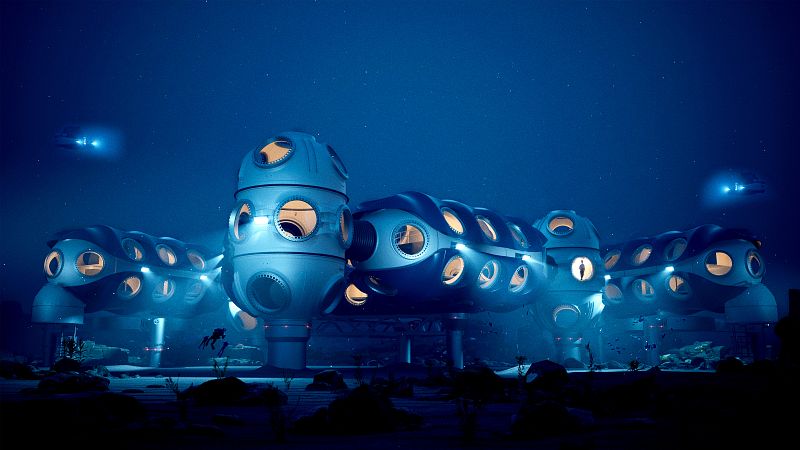
Picture living beneath the waves, not merely for a few hours during a dive, but for an extended period - days, weeks, or even months.
An engineering company in the United Kingdom is planning to build underwater habitats for prolonged human underwater investigations.
"We took a step back and recognized that the ocean, below the surface of the ocean, remains one of the final major unresolved mysteries for humanity," said Sean Wolpert, the president of DEEP.
We're able to observe space, both very far out and close by, and we can monitor anything in our atmosphere, on land and on the surface of the oceans, but there was a significant difference, not only in terms of concrete exploration, but also on a personal level, between humanity and the ocean.
The oceanic exploration and technology company is planning to deploy its initial habitat, Vanguard, by the end of 2025.
The Vanguard module measures 12 metres in length and 7.5 metres in width. It will be crewed by up to three people at depths of 100 metres and serves as a test-bed for the development of the Sentinel habitat, a larger and more advanced structure scheduled for deployment in 2027.
Vanguard is ideally suited for short-term missions with professional divers. Sentinel will serve as a long-term platform for research, accommodating up to six people for extended missions of up to 28 days at a depth of 200 m, according to DEEP.
The Sentinel facility will comprise wet and dry laboratories, as well as a moon pool - an structure that allows divers to commute effortlessly between the ocean and the habitat.
This would enable researchers to collect and analyze samples from the seabed in real-time, thereby minimizing the necessity to return to the surface.
Making the ocean 'sexy'
"DEEP", the company says, is what "SpaceX is to the space agencies, global navies, and oceanographic research groups".
The organization believes that naval forces worldwide operating in areas where vulnerable underwater infrastructure is present will benefit from undersea habitats.
Clearly, you can expect international navies to show a keen interest. One of the highly contested zones is vital subsea infrastructure. The vast majority of the information that we use is transmitted through underwater cables.
Undersea cables, transmitting over 95 percent of the world's internet traffic, according to NATO, and pipelines carrying oil and gas are susceptible to deliberate destruction.
In recent years, the Europe region experienced several distressing incidents including the 2022 sabotage of the Nord Stream pipelines, the 2023 incident affecting the Balticconnector gas pipeline, and the damage to the undersea cables in the Baltic Sea occurred in 2024.
He mentioned that maintaining critical oil and gas transport is a top priority, particularly as a significant portion of global flows are channeled through underwater pipelines. It's thus essential for global navies, regardless of their location, to be able to observe, protect, and verify the integrity of this critical infrastructure.
The sentinel can also function as a research laboratory under the sea for scientists studying marine life, as well as a tourist attraction featuring a fully interactive aquarium.
What we aim to do is recapture the excitement that SpaceX brought back to space exploration, making it cool and appealing to a new generation.
We're looking to replicate the SpaceX experience and offer a platform that provides the same capability to draw in top minds who want to make a positive impact and drive innovation at sea,
Fabricated by advanced manufacturing robots capable of three-dimensional printing.
According to DEEP, Sentinel is being built using a process called wire-arc additive manufacturing by six 3.5-meter tall robots.
This process is similar to a massive 3D printer, but rather than using plastic, it utilizes metal wire to construct the habitat's framework, layer by layer, guaranteeing it can withstand the crushing pressure of the deep ocean.
"The way we're manufacturing is evolving. Rather than breaking down production through conventional methods, we're creating processes that result in significantly less waste," Wolpert said.
Deep notes that underwater habitats can be reassembled and redeployed as easily as Legos, due to their modular and transportable design.
"We can place the bunks on the top deck in module one and then connect it to module two. The top deck can be rearranged to function as an entire laboratory, enabling seamless collaboration with colleagues in the on-site lab," Wolpert said.
Vanguard's initial deployment location remains undecided, but DEEP is currently in talks with prospective clients in Europe, the Middle East, and North America.
For more on this story, watch the accompanying video.
